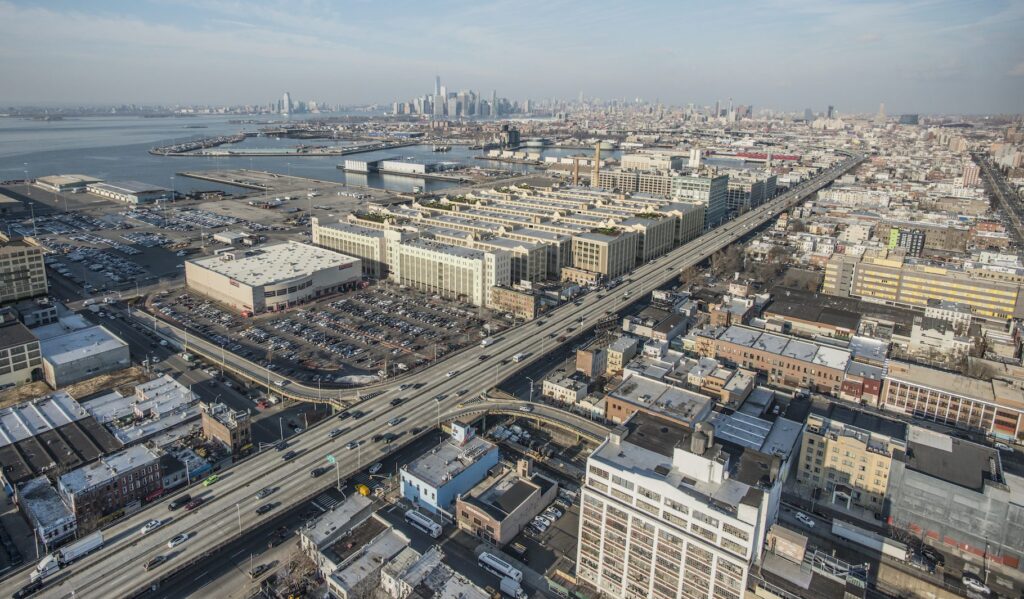
Reflecting Back and Looking Forward on a Century of Zoning

Written by Richard Barth, Capalino’s Executive Vice President for Housing and Real Estate Strategies. To learn more about our Land Use Planning + Zoning services, contact Richard at richard@nullcapalino.com or 212-616-5845.
Since the nation’s first comprehensive zoning resolution was enacted in New York City exactly a century ago in 1916, zoning has been used as a critical tool to direct growth and shape the fabric, economy and quality of life in New York City.
In recognition of the resolution’s 100 year anniversary, I’m thrilled to join prominent urban thought leaders, developers, city planners, and architects from around the world for the forum entitled Zoning 100: A Symposium for the Future. This discussion will reflect on the history of NYC zoning and how it may be deployed to create more equitable, productive, sustainable and livable cities across the globe. Leaders in the discussion include Mayor de Blasio and conference co-chairs Carl Weisbrod, Director of the New York City Department of City Planning and Chairman of the New York City Planning Commission, and Jerold S. Kayden, the Frank Backus Williams Professor of Urban Planning and Design at the Harvard Graduate School of Design.
With over 25 years of experience addressing planning and development issues at the Department of City Planning, I have been involved in a number of initiatives where zoning has been used a regulatory tool to direct growth, and respond to changing needs and conditions of the city. Zoning must continue to be used to respond to a multiplicity of goals, from economic competitiveness to affordable housing.
Let’s take a closer look at specific opportunities to use zoning to further shape New York City.

Hudson Yards Skyline Rendering
The City’s Economy and Demand for Land
The City’s population is at an all-time high of 8.55 million, and the employment level is now near an all-time high of 4.1 million jobs. As reported by the Department of City Planning, at 78,000 jobs, employment in manufacturing firms represented just two percent of the city’s economy in 2015, down from almost 33 percent in 1950. The huge decline in manufacturing jobs and port-related activity left vast swaths of land zoned for manufacturing with little economic activity. Over time, the city has successfully responded to this decline and population growth with major area-wide planning and zoning initiatives to promote housing, commercial investment and waterfront access.
Two great examples of this are Hudson Yards and the Greenpoint Williamsburg waterfront. Hudson Yards replaced former manufacturing land on Manhattan’s west side with a new decentralized central business district. It will accommodate more than 40 million square feet of commercial and residential space coupled with substantial infrastructure investment. On the Brooklyn waterfront, the Greenpoint Williamsburg rezoning allowed for mixed-income residential development with mandatory public access along four miles of this waterfront.

The debate over the reuse of manufacturing zoned land will intensify as the population continues to grow and the city continues to evolve. Special mixed-use zoning districts have been adopted to allow industrial, commercial and residential uses side by side. These zones are intended to better reflect new ways to live and work, and continue to accommodate commercial and industrial uses as new housing opportunities are created.
More recently, new mixed-use zones have been created to maintain a better balance among residential and non-residential uses. As the city and private applicants look at additional manufacturing areas to rezone, there may be new efforts to further tailor mixed-use zoning to facilitate more than housing. These target light industrial and commercial uses that help promote new ways of doing business, including technology and other maker uses.
While decision-makers need to be mindful not to mandate uses that the market cannot support, new strategies for rezoning additional underutilized industrial areas will be needed.
Parking Plays a Role in the Cost of Housing
 The 1961 zoning enacted a comprehensive set of regulations requiring off-street parking in most areas of the city. Some experts argue that the off-street parking requirement has increased car ownership in the city, although studies have shown other factors–income, location and housing type– are driving car ownership. While alternatives to auto use must be a priority, it is not clear whether zoning is an effective means to achieve this goal.
The 1961 zoning enacted a comprehensive set of regulations requiring off-street parking in most areas of the city. Some experts argue that the off-street parking requirement has increased car ownership in the city, although studies have shown other factors–income, location and housing type– are driving car ownership. While alternatives to auto use must be a priority, it is not clear whether zoning is an effective means to achieve this goal.
Required off-street parking drives up the cost of multi-family housing, often putting unnecessary constraints on development in areas where access to mass transit is plentiful. The City recently enacted citywide changes as part of its Zoning for Quality and Affordability (ZQA) that eliminates or reduces required parking for affordable and senior housing, making it less expensive to build affordable housing.
Reductions in parking requirements for other types of housing in targeted locations could help further drive down the cost of housing.
Mandatory Inclusionary Housing (MIH)
Since 1961, zoning has been amended to advance city priorities and social policy goals. Special zoning was enacted to preserve the theater district and to reinvent the High Line, and the Garment District was created to keep garment companies in Midtown. In the 1980s, affordable housing was promoted through the use of incentive based inclusionary housing. Now as the City seeks to address equity issues and the need for market rate and affordable housing, the current administration has adopted Mandatory Inclusionary Housing (MIH).
East New York, the subject of a comprehensive rezoning, is the first implementation on a wide scale of the new MIH provisions, coupled with the rezoning of manufacturing land to residential use. In order to make MIH applicable in other locations, the city has embarked on targeted area-wide rezoning. At the same time, applicants seeking additional residential density will now be required to incorporate affordable housing under the new rules.

The Highline
Today, a century after the city’s first zoning resolution was enacted to address the towering office buildings affecting light and air at street level, and incompatible land uses were located next to each other, we face new challenges. Specific zoning map and zoning text changes will be critical to meet the expanding housing and economic development challenges in the City.
Capalino Can Help
 Capalino offers extensive expertise on zoning, policy and land use to developers and not-for-profit organizations looking to understand the opportunities created by zoning changes. If you are a developer or not-for-profit organization who needs assistance please contact Richard Barth at richard@nullcapalino.com or 212-616-5845.
Capalino offers extensive expertise on zoning, policy and land use to developers and not-for-profit organizations looking to understand the opportunities created by zoning changes. If you are a developer or not-for-profit organization who needs assistance please contact Richard Barth at richard@nullcapalino.com or 212-616-5845.
Get The Latest From Capalino! Sign up for our free weekly newsletter for a roundup of top news and appointments from New York City and State government straight your inbox every Friday. Click here to subscribe to Affairs+Appointments.

